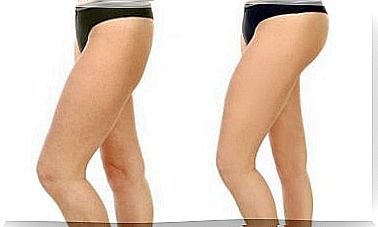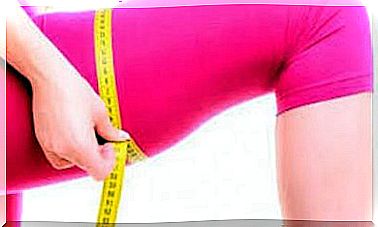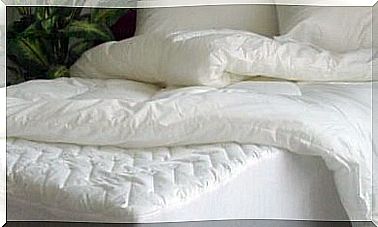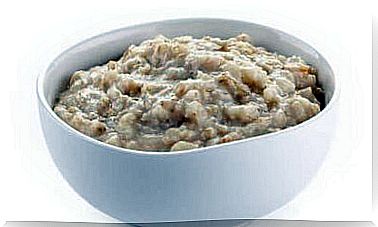Newborn Navel Care
The best way to care for a newborn’s navel is not to interfere with the natural process. It is enough to follow some basic hygiene measures, and especially to keep the area very dry.
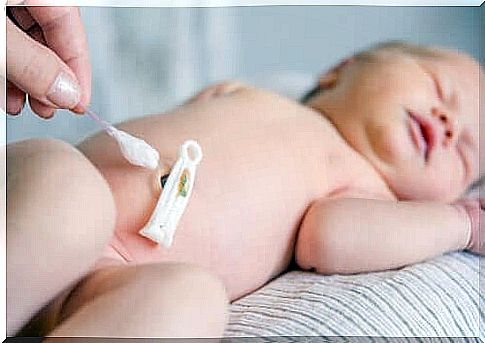
Caring for the navel of a newborn is a concern for some parents, especially if they do not have much experience in this area. There is no need to worry because a few basic treatments are enough to remove the residue from the umbilical cord and heal the navel.
When the baby is in the womb, it feeds through the umbilical cord. At birth, this cord is cut because it no longer fulfills any function. The newborn’s navel is what’s left of the umbilical cord until it comes completely loose.
In addition, the care of the navel of the newborn is basically aimed at preventing infection. It is enough to have proper hygiene and to take a few simple precautionary measures so that this does not happen. With the right measures, in two or three weeks, the rest will be done naturally.
The newborn’s navel
At the time of birth, the doctor or midwife cuts the umbilical cord about 4 centimeters from the baby’s abdomen. This is done using homeostatic forceps whose function is to contain the bleeding. The rest of the cord is held in place with special plastic clips.
From then on, the newborn’s navel begins a process of self-destruction. Over the days, the stump will dry, wrinkle and take on a brown color until it finally comes off. All of this happens within 8-10 days. In babies who are born by cesarean section, it may take a few days longer.
After the stump has fallen, a small sore remains that takes about 3 to 5 days to heal. During this time, special care must be taken to ensure that no infections or complications occur. From there, there is no need to worry anymore.
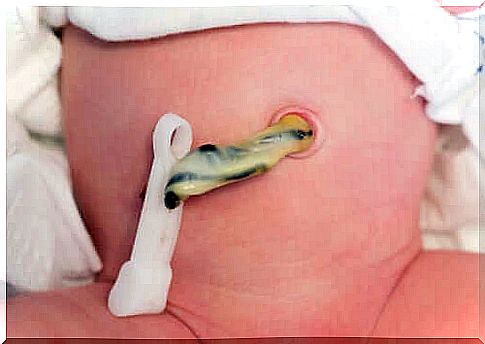
Navel care for newborns
Navel care for newborns is completed when the area is well healed. There are myths, beliefs, and half-truths about this. In the past, it was believed that it was better to treat the navel with 70-degree alcohol, alone or in combination with an antiseptic like chlorhexidine.
Various studies have shown that it can delay the fall of the navel. It is therefore only advisable if the baby lives in an environment where hygiene is poor. Otherwise, the only rule of thumb is to keep the belly button clean and dry.
It involves a few basic actions such as:
- Wash your hands before washing or changing the baby
- Do not tear off the navel: it will fall naturally when the time is right
- Bathing the baby is not a problem. On the other hand, make sure to dry the navel well when going out.
- If the navel area is soiled with urine or stool, it should be cleaned with a towel and lukewarm water
- The navel area must remain uncovered: it is necessary to avoid as much as possible that a garment or the diaper covers it
Caring for the newborn’s navel
It is advisable to treat the newborn’s navel until it heals completely. On the other hand, it is a simple procedure to perform after bathing. Just follow the following steps:
- After the bath, thoroughly dry the whole body of the baby
- Wash hands properly, with soap and water
- Wet a sterile gauze with a mixture of warm water and neutral soap. Or with alcohol if the environment is unhygienic
- Cleanse the area around the navel properly
- Then apply a clean gauze to dry the area well
- Do not use cotton or mercurochrome, or iodine products

Warning signs
If after 20 days there is no cure, there may be an infection (this is called omphalitis). In this case, the area is usually red and hardened. In addition, there will be a bloody and smelly secretion. If so, see the pediatrician.
When the stump falls off, it is normal for it to bleed a little. If the bleeding is heavy, or does not stop, the best thing to do is to lightly squeeze the area with sterile gauze and then see a doctor. Sometimes a red pimple appears on the navel scar (umbilical granuloma). It does not matter, but it also deserves a consultation with the pediatrician.
In addition, a bulge can also appear on the navel, it corresponds to a hernia. It is mild and usually goes away after 2-3 years. Finally, there may also be a small protuberance shaped like an elephant trunk, called the umbilical proboscis . The pediatrician will then tell you all the steps to follow.


